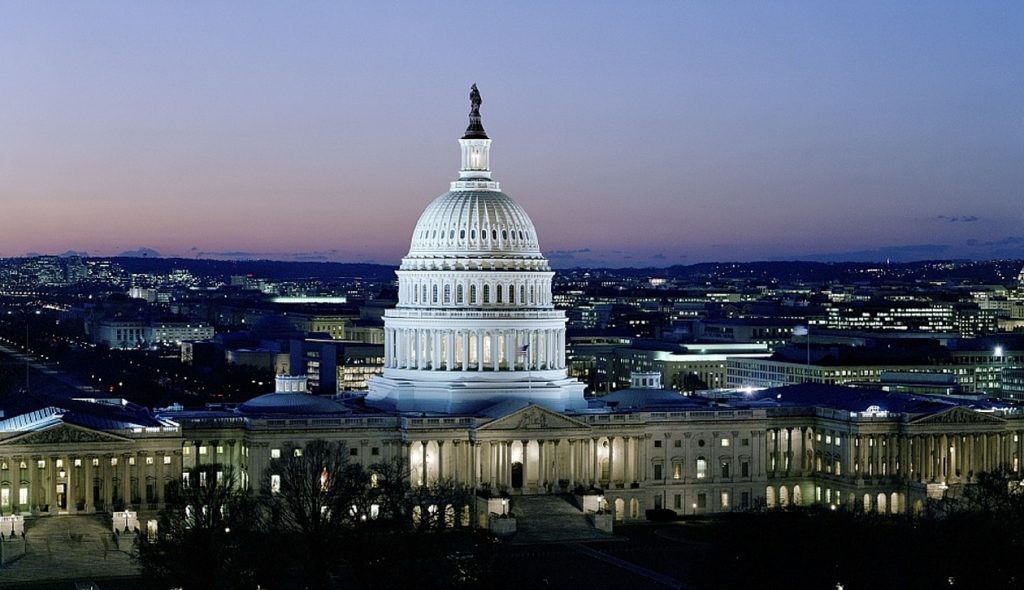On Feb. 15, President Donald Trump passed the Consolidated Appropriations Act of 2019 to avert another shutdown and allocate full government funding for the fiscal year ending Sep. 30. The initial bill was 1,169 pages; the final version a mere 465. If you haven’t had a chance to look through it all, we’ve highlighted some interesting points in the areas of IT and the federal workforce.
First, federal employees have gained an average 1.9 percent pay increase (see page 189) for the rest of this fiscal year. A 1.4 percent across-the-board pay increase would apply, as well as an additional 0.5 percent locality pay modification, to the first pay period of 2019 and the pay periods following. The vice president and other high-ranking political appointees will also receive a 1.9 percent pay increase.
In terms of IT, a considerable amount of funding has been distributed for department-specific purposes. For example, no less than $6 million of the $236.8 million set aside for rural development programs are for information technology investments. The Technology Modernization Fund (TMF), which was put in place by the Modernizing Government Technology Act of 2017, received $100 million in fiscal 2018 and asked for an additional $210 million in fiscal 2019. The fund received about 12 percent of the funding requested or $25 million.
Chief information officer (CIO) authority and cybersecurity initiatives were also underscored in the legislation. Here are the key areas of impact:
CIOs
Section 623 of the act states that “the head of each executive branch agency funded by this Act shall ensure that the Chief Information Officer of the agency has the authority to participate in decisions regarding the budget planning process related to information technology.”
For the State Department, specifically, the CIO must concur with any new major IT investment in order for the funds to be used. The CIO must consider whether the new investment is consistent with the Department Information Technology Strategic Plan; maintains consolidated control over enterprise IT functions or improves operational maintenance; improves State’s resiliency to a cyberattacks; reduces the department’s IT costs over the long-term; and is in accordance with the Federal Acquisition Regulation (FAR), including FAR Part 6 regarding competition requirements.
Cybersecurity
The Transportation Department received $15 million for key cybersecurity initiatives, including “necessary upgrades to wide area network and information technology infrastructure, improvement of network perimeter controls and identity management, testing and assessment of information technology against business, security, and other requirements.”
The Cybersecurity and Infrastructure Security Agency (CISA) was allotted $13.1 million for research and development, to remain available until Sept. 30, 2020.
The Treasury Department received $25.2 million for salaries and expenses for enhanced cybersecurity for systems operated by the department, to remain available until September 30, 2021, as long as the CIO of the individual offices and bureaus submit a spending plan for each investment to the Treasury CIO for approval. The legislation also provides $1 million for administrative expenses for the Treasury CIO to provide oversight of the investments made.
IT Modernization
For the Housing and Urban Development Department’s Information Technology Fund, which was established to develop, enhance, and modernize the IT infrastructure of departmentwide and program systems, $280 million was set aside for continued operation and maintenance.
The Interior Department received $55.7 million for the operation and maintenance of a financial and business management system, general IT improvements, cybersecurity and general operations.
Of the $214.6 million set aside for the necessary expenses associated with the Treasury Department, a maximum of $24 million will be available until Sept. 30, 2020 for IT modernization efforts and for the development and implementation of programs in the Office of Critical Infrastructure Protection and Compliance Policy.
Under Executive Office of the President and funds appropriated to the president, $28.5 million has been set aside for expenses needed to further the “integrated, efficient, secure, and effective uses of information technology in the federal government.” The Director of the Office of Management and Budget (OMB) can transfer the funds to one or more agencies, contingent on need.
Census
The Census Bureau received more than $3.5 billion “for necessary expenses for collecting, compiling, analyzing, preparing, and publishing statistics for periodic censuses and programs provided for by law.” The funds are available until Sept. 30, 2021, and no more than 50 percent of the funds can be used for information technology related to 2020 census delivery until the Secretary updates the previous expenditure plan and resubmits an expenditure plan to the Committees on Appropriations of the House of Representatives and the Senate.
